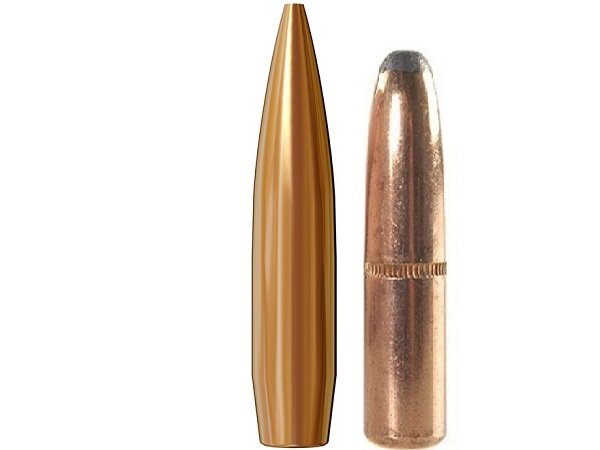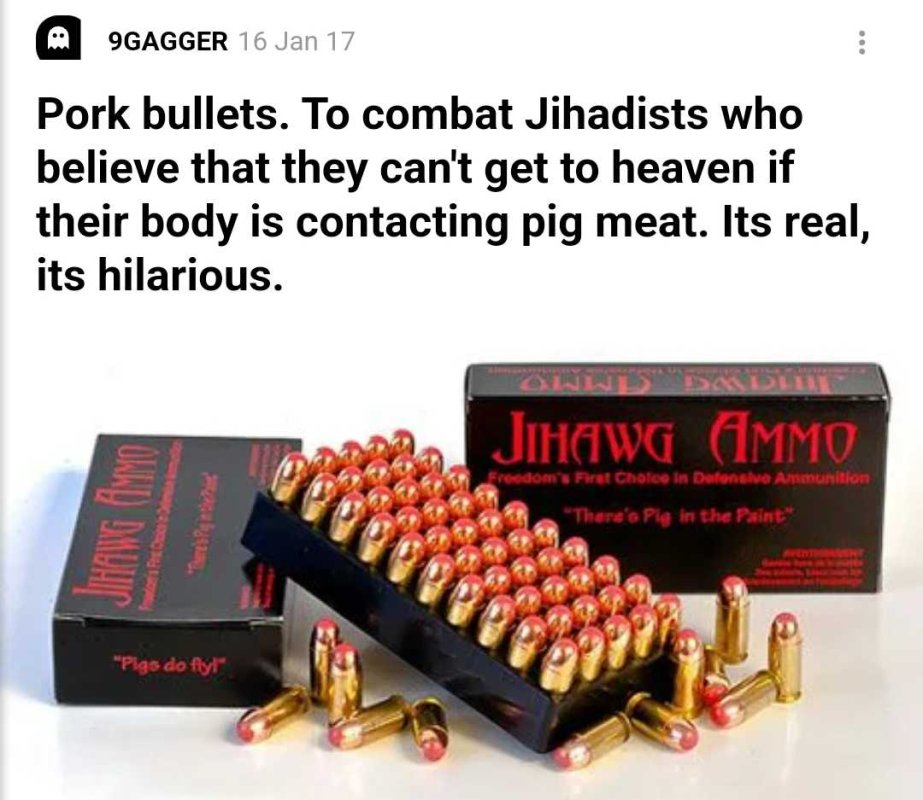The gun shoots great with factory loads and I checked for keyholes as well the holes are fine just too far apart from one another lolNothing beats experience! You guys seem to have some.
But, I thought he said it worked well with factory sub ammo.
Navigation
Install the app
How to install the app on iOS
Follow along with the video below to see how to install our site as a web app on your home screen.
Note: This feature may not be available in some browsers.
More options
-
ODT Gun Show & Swap Meet - May 4, 2024! - Click here for info
You are using an out of date browser. It may not display this or other websites correctly.
You should upgrade or use an alternative browser.
You should upgrade or use an alternative browser.
300blk load help
- Thread starter pistolpat
- Start date
The gun shoots great with factory loads and I checked for keyholes as well the holes are fine just too far apart from one another lol
What is the factory ammo that shoots fine?
What are the bullets you are reloading?
What is the twist rate on your barrel?
Are there any muzzle devices attached to the barrel like a suppressor?
Nothing beats experience! You guys seem to have some.
But, I thought he said it worked well with factory sub ammo.
Most likely due to bullet profile. OP's bullets have long, parallel sides, whereas factory ammo has shorter caliber diameter parllel area. Makes a difference on stabilizing the round and needed rifling twist.
S&B, Berry’s, 1-7, silencerco hybridWhat is the factory ammo that shoots fine?
What are the bullets you are reloading?
What is the twist rate on your barrel?
Are there any muzzle devices attached to the barrel like a suppressor?
Not sure of the profile of the factory loads I was shooting but I will look into that. Twist is 1-7Most likely due to bullet profile. OP's bullets have long, parallel sides, whereas factory ammo has shorter caliber diameter parllel area. Makes a difference on stabilizing the round and needed rifling twist.
Are your s&b are boat tail ?
Berrys is flat Bottom right?
Berrys is flat Bottom right?
I think the Berry bullet will work, but may need a slower powder that produces more gas. The extra weight of the powder charge will increase the recoil and allow the bolt to lock back more easily, guaranteeing more reliable chambering.
The thing about plated bullets is that they start out as soft swagged lead bullets that are easily damaged by semi-auto loading, over crimping, and even too much rotational speed in the barrel. In the BLK the crimp, and the trip from the mag to the barrel chamber are potential problem areas. So, make sure your brass is chamfered and deburred so as not to damage the plating. You can’t compromise the crimp, but making sure the case is free of burrs and chamfered will help.
As an aside, I have had plated 40S&W bullets (from one of the big names, can not remember, Ranier or Berry)fly apart when loaded to factory standard velocity in a H&K USP. The 1-7 twist is pretty fast for a soft bullet. The Hornady FMJ’s might work better and could use more powder and stay subsonic.
The thing about plated bullets is that they start out as soft swagged lead bullets that are easily damaged by semi-auto loading, over crimping, and even too much rotational speed in the barrel. In the BLK the crimp, and the trip from the mag to the barrel chamber are potential problem areas. So, make sure your brass is chamfered and deburred so as not to damage the plating. You can’t compromise the crimp, but making sure the case is free of burrs and chamfered will help.
As an aside, I have had plated 40S&W bullets (from one of the big names, can not remember, Ranier or Berry)fly apart when loaded to factory standard velocity in a H&K USP. The 1-7 twist is pretty fast for a soft bullet. The Hornady FMJ’s might work better and could use more powder and stay subsonic.

The two bullets in the pic are both .30 cal 220 grain bullets. If you seat each one to the same overall cartridge length, the ogive for each bullet will be at a different distance from the lands of the rifling and cause different flight characteristics. The amount of bullet inside the case mouth will also cause different pressures due to changes in case powder capacity even when using the same exact powder charge. The bullet structure / profile is also completely different. One may stabilize for a short time and the other may not stabilize at all when fired through the same barrel. One is boat tail and one is a flat base. A bullet can be destabilized in flight for a good distance before it begins to key hole. It will wobble on it axis and thus a grouping will open up more the further away it gets from the muzzle. So a bullet may appear to be flying true through paper at 50 yards, but at 100 yards it may keyhole. While firing a bullet with the same weight and a different profile may open up several inches at 50 yards and keyhole at 75 yards. Two barrels with the same twist rate but different lengths may cause the same bullet to not stabilize or to stabilize.
Now, we have a new variable that we did not know about before and that is the suppressor. The issue you are describing I have had the exact same thing happen twice on different rifles. On one rifle the problem was the twist rate of the barrel. I replaced the barrel with a faster twist rate and the problem was solved. Since you are using a 1-7 twist rate, I am doubting that as the cause. If you were using a 1-9, I would say that is your problem.
On the other rifle, the problem was caused by a very light contact (baffle strike) with the bullet just barely touching the end cap as it left the suppressor. It only did this with my reloads and not the factory loaded ammunition. (Don't ask me why, I still have not figured that one out but it was likely due to the bullet profile) The barrel had been threaded off center just enough to cause this. The more I shot it, the worse it became (barrel heating). I had horrible groups just like you are describing. Once the barrel was cut back slightly and re-threaded the problem was solved. I would strongly recommend you test your load grouping without your suppressor and see if it eliminates the problem. Also, look for a little shiny spot inside your end cap of your suppressor as a clue. If your loads are still doing this without the suppressor, I would try loading some different bullets.
Yeah the Berry’s is flat I will have to buy some more S&B to take one apart and checkAre your s&b are boat tail ?
Berrys is flat Bottom right?
I have been shooting with the 45 endcap since I have been putting money into the reloading I haven’t purchased the 30 cal endcap so I doubt it would be contacting the endcap but I will still check I’m willing to try anything at this point I’m so discouraged that I spent all this money to get set up to load and can’t get decent groupsView attachment 1389484
The two bullets in the pic are both .30 cal 220 grain bullets. If you seat each one to the same overall cartridge length, the ogive for each bullet will be at a different distance from the lands of the rifling and cause different flight characteristics. The amount of bullet inside the case mouth will also cause different pressures due to changes in case powder capacity even when using the same exact powder charge. The bullet structure / profile is also completely different. One may stabilize for a short time and the other may not stabilize at all when fired through the same barrel. One is boat tail and one is a flat base. A bullet can be destabilized in flight for a good distance before it begins to key hole. It will wobble on it axis and thus a grouping will open up more the further away it gets from the muzzle. So a bullet may appear to be flying true through paper at 50 yards, but at 100 yards it may keyhole. While firing a bullet with the same weight and a different profile may open up several inches at 50 yards and keyhole at 75 yards. Two barrels with the same twist rate but different lengths may cause the same bullet to not stabilize or to stabilize.
Now, we have a new variable that we did not know about before and that is the suppressor. The issue you are describing I have had the exact same thing happen twice on different rifles. On one rifle the problem was the twist rate of the barrel. I replaced the barrel with a faster twist rate and the problem was solved. Since you are using a 1-7 twist rate, I am doubting that as the cause. If you were using a 1-9, I would say that is your problem.
On the other rifle, the problem was caused by a very light contact (baffle strike) with the bullet just barely touching the end cap as it left the suppressor. It only did this with my reloads and not the factory loaded ammunition. (Don't ask me why, I still have not figured that one out but it was likely due to the bullet profile) The barrel had been threaded off center just enough to cause this. The more I shot it, the worse it became (barrel heating). I had horrible groups just like you are describing. Once the barrel was cut back slightly and re-threaded the problem was solved. I would strongly recommend you test your load grouping without your suppressor and see if it eliminates the problem. Also, look for a little shiny spot inside your end cap of your suppressor as a clue. If your loads are still doing this without the suppressor, I would try loading some different bullets.







